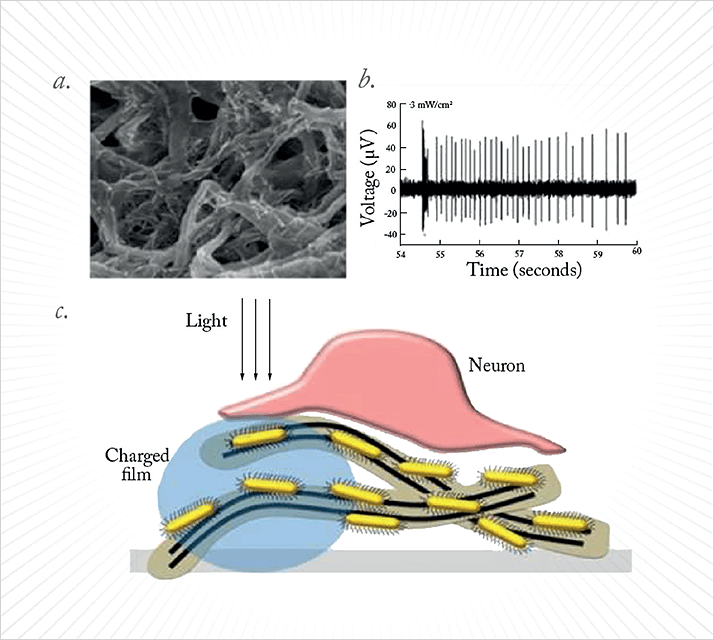
Retinal implants – once the stuff of science fiction – are today a reality, with well over 100 patients with retinitis pigmentosa (RP) having received such devices to date. Enabling the blind to see is an incredible achievement, but the technology used to achieve this incredible feat contains a fair amount of rigid, electronic components, wiring and external equipment. Wouldn’t it be great if the implant just worked on its own? That might just be possible: a photoresponsive material – semiconductor nanocrystal (SCNC) – that can produce light-induced neuronal stimulation, without the need for any external wiring, power sources or processing apparatus (1).
For those in the know, SCNC systems are hugely promising: they’re photostable, aren’t bleached by UV light, and their optical, electronic and chemical interaction properties are eminently tunable. The only problem is that ambient light levels aren’t able to induce effective neuronal stimulation with SCNCs. That is, until now. A new form of SCNC, consisting of carbon nanotubes and CdSe/CdS semiconductor nanorods (CNT-NRs; Figure 1a) has been shown to evoke neuronal responses to light of intensities ≥3 mW/cm2 – in in vitro embryonic (E14) chick retina preparations (Figure 1b,c). They’re still a long way from the clinic and, like the first generation of retinal prostheses, a number of questions regarding the long-term biocompatibility and longevity of CNT-NR implants will be asked. Lead author, Lilach Baraket acknowledged this, stating that, “We are still far away from actually replacing the damaged retina, but we have now demonstrated that this new material stimulates neurons efficiently and wirelessly with light,” before adding, “If you compare this to other devices based on silicon technology, which require wiring to outside energy or light sources, this is a groundbreaking new direction.”
References
- L. Bareket, N. Waiskopf, D. Rand, et al., “Semiconductor nanorod-carbon nanotube biomimetic films for wire-free photostimulation of blind retinas”, Nano Lett., 14, 6685–6692 (2014). doi: 10.1021/nl5034304.
